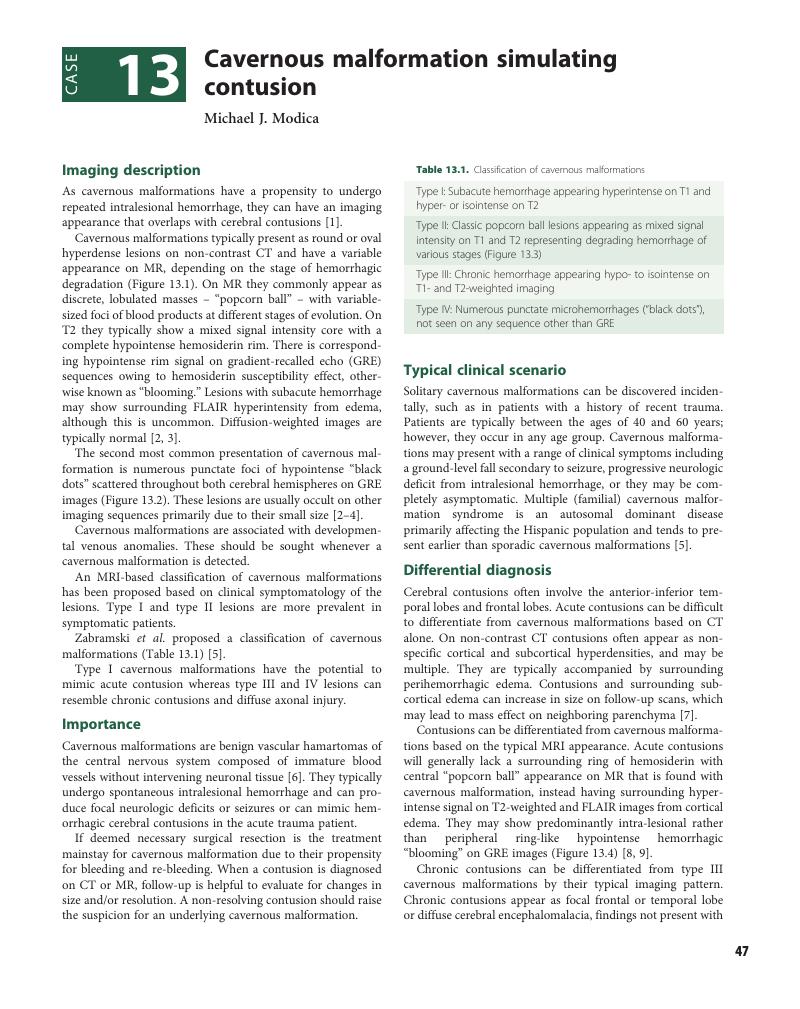Book contents
- Frontmatter
- Contents
- List of contributors
- Preface
- Acknowledgments
- Section 1 Brain, head, and neck
- Neuroradiology: extra–axial and vascular
- Neuroradiology: intra-axial
- Case 11 Enlarged perivascular space
- Case 12 Tumefactive multiple sclerosis
- Case 13 Cavernous malformation simulating contusion
- Case 14 Diffuse axonal injury
- Neuroradiology: head and neck
- Section 2 Spine
- Section 3 Thorax
- Section 4 Cardiovascular
- Section 5 Abdomen
- Section 6 Pelvis
- Section 7 Musculoskeletal
- Section 8 Pediatrics
- Index
- References
Case 13 - Cavernous malformation simulating contusion
from Neuroradiology: intra-axial
Published online by Cambridge University Press: 05 March 2013
- Frontmatter
- Contents
- List of contributors
- Preface
- Acknowledgments
- Section 1 Brain, head, and neck
- Neuroradiology: extra–axial and vascular
- Neuroradiology: intra-axial
- Case 11 Enlarged perivascular space
- Case 12 Tumefactive multiple sclerosis
- Case 13 Cavernous malformation simulating contusion
- Case 14 Diffuse axonal injury
- Neuroradiology: head and neck
- Section 2 Spine
- Section 3 Thorax
- Section 4 Cardiovascular
- Section 5 Abdomen
- Section 6 Pelvis
- Section 7 Musculoskeletal
- Section 8 Pediatrics
- Index
- References
Summary

- Type
- Chapter
- Information
- Pearls and Pitfalls in Emergency RadiologyVariants and Other Difficult Diagnoses, pp. 47 - 52Publisher: Cambridge University PressPrint publication year: 2013



